
Aerospace and defense company Curtiss-Wright (NYSE: CW) reported Q2 CY2025 results exceeding the market’s revenue expectations, with sales up 11.7% year on year to $876.6 million. The company expects the full year’s revenue to be around $3.41 billion, close to analysts’ estimates. Its non-GAAP profit of $3.23 per share was 3.3% above analysts’ consensus estimates.
Is now the time to buy Curtiss-Wright? Find out by accessing our full research report, it’s free.
Curtiss-Wright (CW) Q2 CY2025 Highlights:
- Revenue: $876.6 million vs analyst estimates of $851 million (11.7% year-on-year growth, 3% beat)
- Adjusted EPS: $3.23 vs analyst estimates of $3.13 (3.3% beat)
- The company slightly lifted its revenue guidance for the full year to $3.41 billion at the midpoint from $3.39 billion
- Adjusted EPS guidance for the full year is $12.85 at the midpoint, roughly in line with what analysts were expecting
- Operating Margin: 17.8%, up from 16.4% in the same quarter last year
- Free Cash Flow Margin: 13.3%, similar to the same quarter last year
- Market Capitalization: $19.2 billion
"Curtiss-Wright delivered a strong second quarter, highlighted by double-digit revenue growth in both our total A&D and Commercial markets, significant operating margin expansion, greater than 20% growth in Adjusted diluted EPS, and better-than-expected free cash flow generation," said Lynn M. Bamford, Chair and CEO of Curtiss-Wright Corporation.
Company Overview
Formed from a merger of 12 companies, Curtiss-Wright (NYSE: CW) provides a range of products and services to the aerospace, industrial, electronic, and maritime industries.
Revenue Growth
Reviewing a company’s long-term sales performance reveals insights into its quality. Any business can have short-term success, but a top-tier one grows for years. Regrettably, Curtiss-Wright’s sales grew at a mediocre 6.4% compounded annual growth rate over the last five years. This wasn’t a great result compared to the rest of the industrials sector, but there are still things to like about Curtiss-Wright.
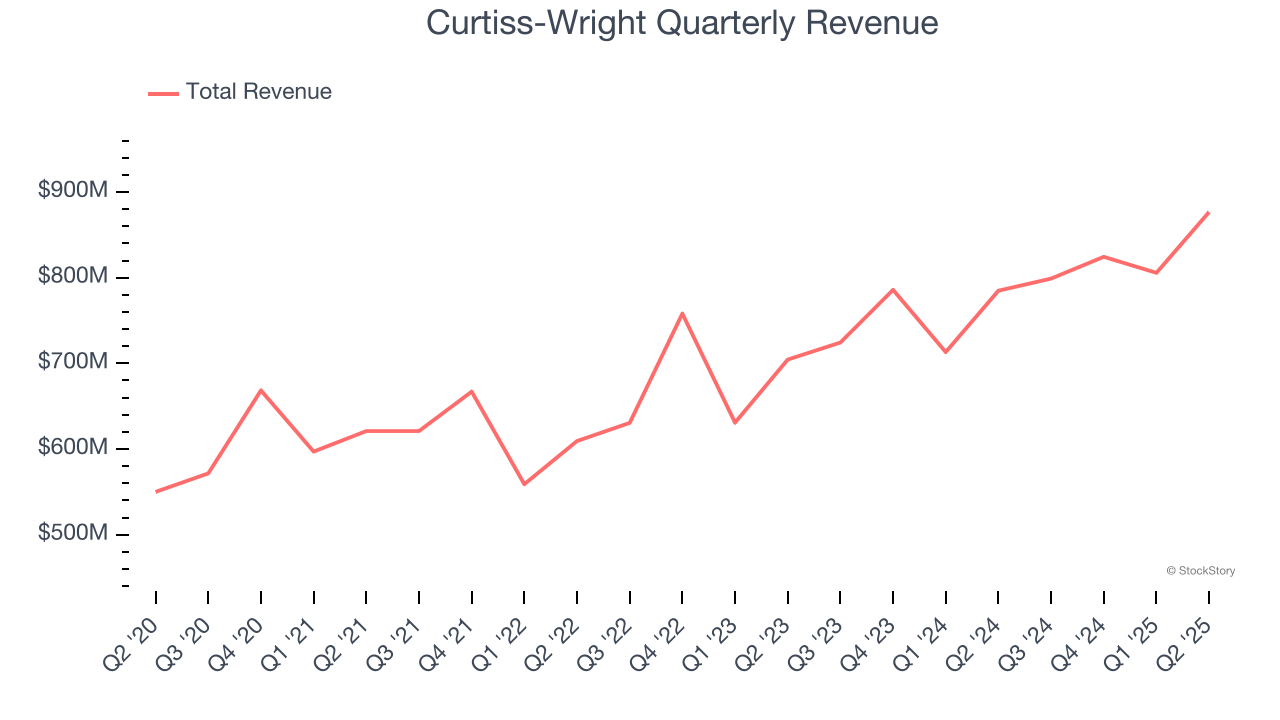
We at StockStory place the most emphasis on long-term growth, but within industrials, a half-decade historical view may miss cycles, industry trends, or a company capitalizing on catalysts such as a new contract win or a successful product line. Curtiss-Wright’s annualized revenue growth of 10.2% over the last two years is above its five-year trend, suggesting its demand recently accelerated. 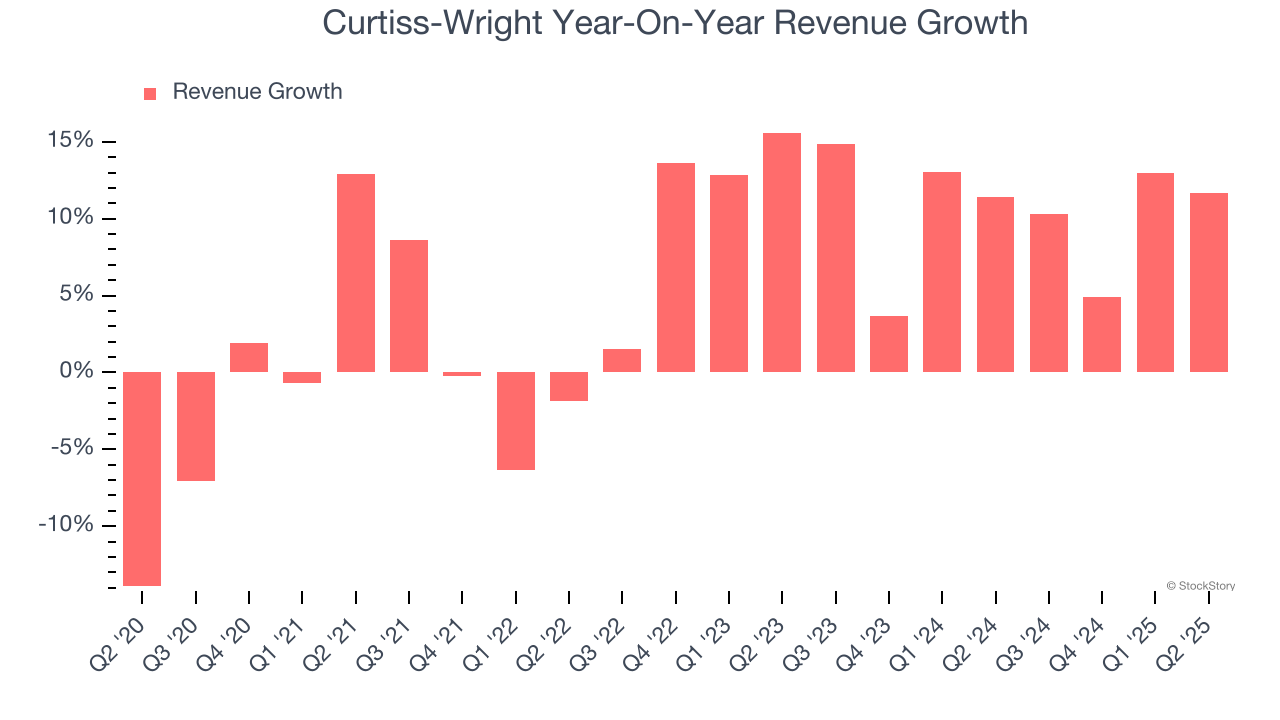
We can dig further into the company’s revenue dynamics by analyzing its most important segments, Product and Services, which are 85.2% and 14.8% of revenue. Over the last two years, Curtiss-Wright’s Product revenue (aerospace & defense technology) averaged 11.1% year-on-year growth while its Services revenue (testing, maintenance, consulting) averaged 6.6% growth. 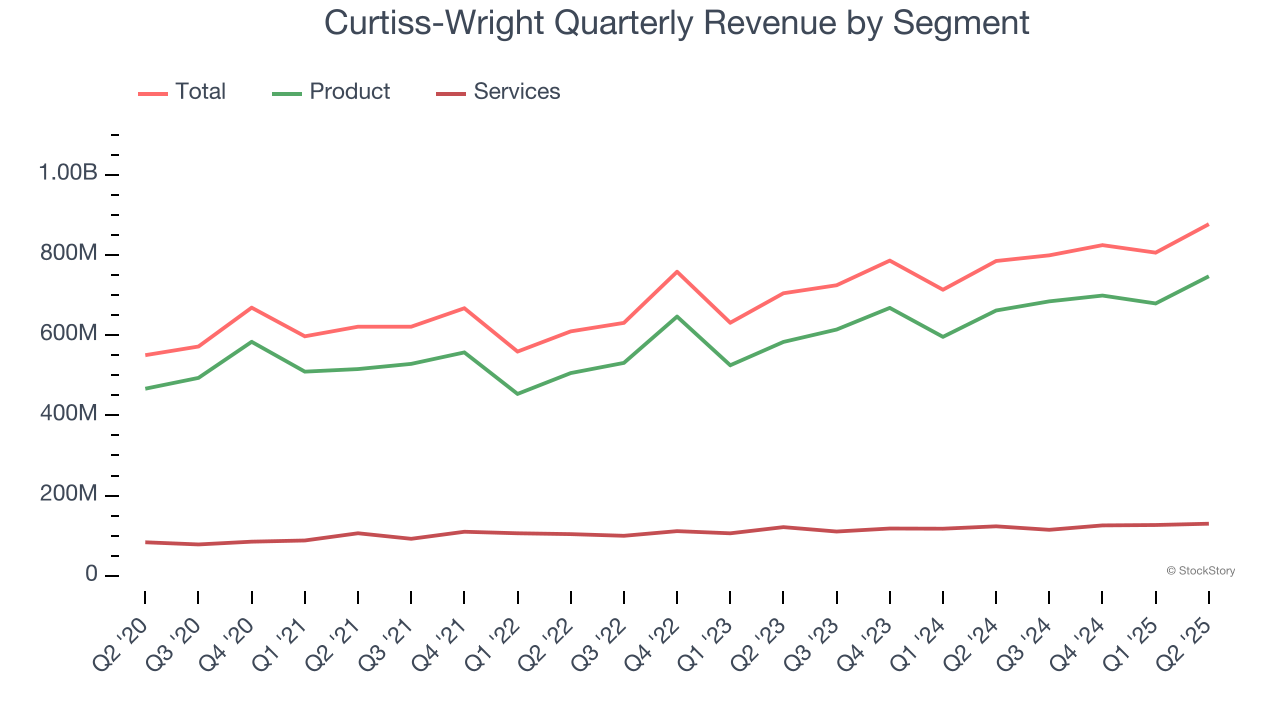
This quarter, Curtiss-Wright reported year-on-year revenue growth of 11.7%, and its $876.6 million of revenue exceeded Wall Street’s estimates by 3%.
Looking ahead, sell-side analysts expect revenue to grow 5.8% over the next 12 months, a deceleration versus the last two years. This projection doesn't excite us and suggests its products and services will face some demand challenges. At least the company is tracking well in other measures of financial health.
Software is eating the world and there is virtually no industry left that has been untouched by it. That drives increasing demand for tools helping software developers do their jobs, whether it be monitoring critical cloud infrastructure, integrating audio and video functionality, or ensuring smooth content streaming. Click here to access a free report on our 3 favorite stocks to play this generational megatrend.
Operating Margin
Curtiss-Wright has been a well-oiled machine over the last five years. It demonstrated elite profitability for an industrials business, boasting an average operating margin of 16.2%.
Analyzing the trend in its profitability, Curtiss-Wright’s operating margin rose by 3.8 percentage points over the last five years, as its sales growth gave it operating leverage.

This quarter, Curtiss-Wright generated an operating margin profit margin of 17.8%, up 1.4 percentage points year on year. This increase was a welcome development and shows it was more efficient.
Earnings Per Share
Revenue trends explain a company’s historical growth, but the long-term change in earnings per share (EPS) points to the profitability of that growth – for example, a company could inflate its sales through excessive spending on advertising and promotions.
Curtiss-Wright’s EPS grew at a remarkable 12.8% compounded annual growth rate over the last five years, higher than its 6.4% annualized revenue growth. This tells us the company became more profitable on a per-share basis as it expanded.
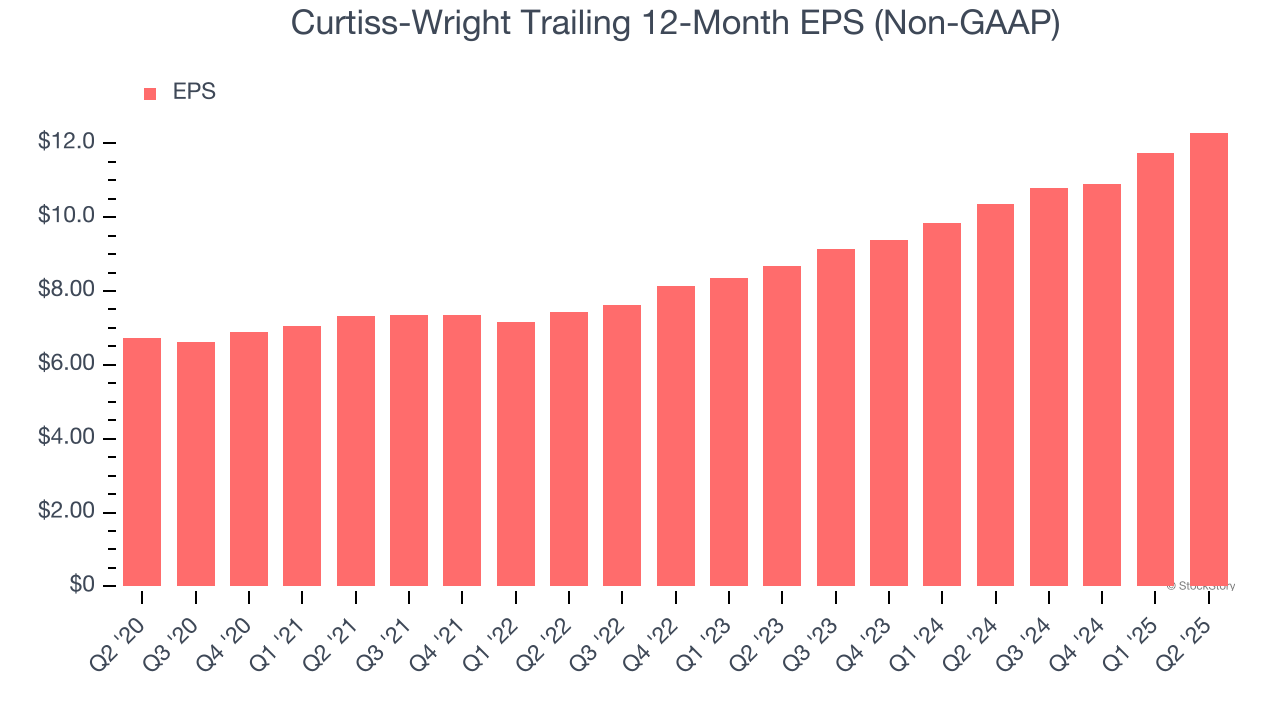
Diving into Curtiss-Wright’s quality of earnings can give us a better understanding of its performance. As we mentioned earlier, Curtiss-Wright’s operating margin expanded by 3.8 percentage points over the last five years. On top of that, its share count shrank by 9.4%. These are positive signs for shareholders because improving profitability and share buybacks turbocharge EPS growth relative to revenue growth. 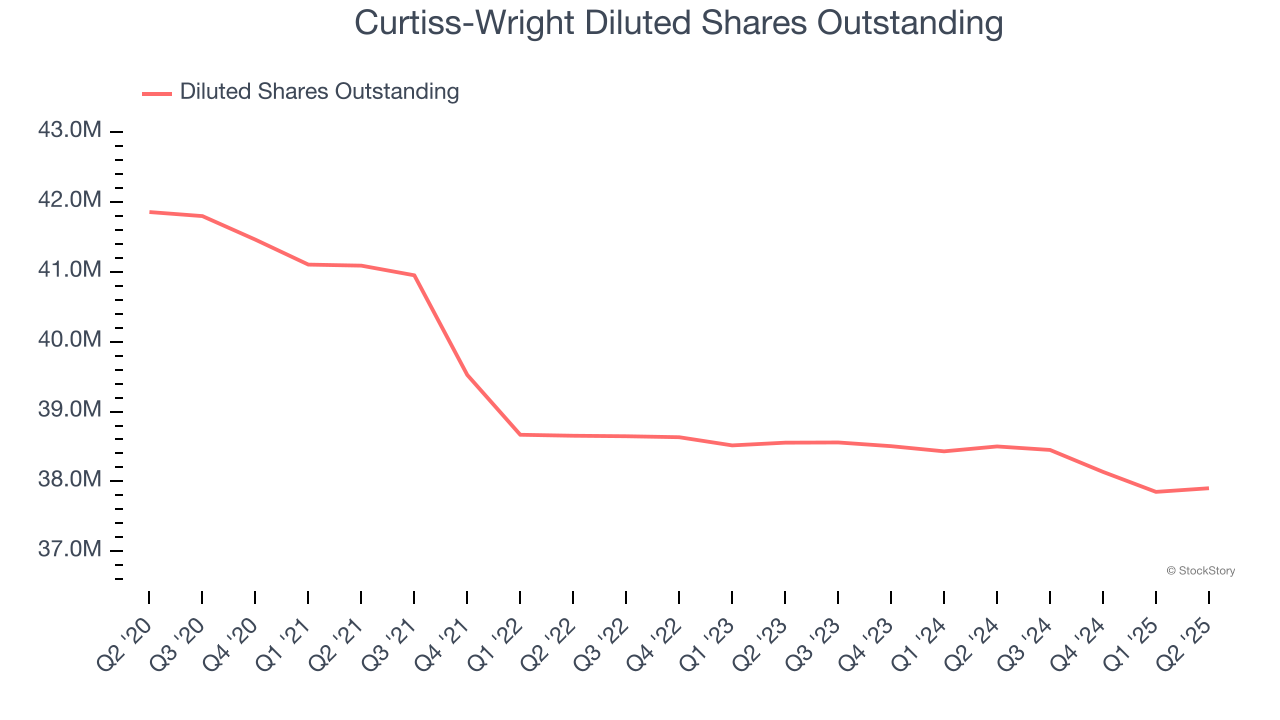
Like with revenue, we analyze EPS over a more recent period because it can provide insight into an emerging theme or development for the business.
For Curtiss-Wright, its two-year annual EPS growth of 19.1% was higher than its five-year trend. We love it when earnings growth accelerates, especially when it accelerates off an already high base.
In Q2, Curtiss-Wright reported adjusted EPS at $3.23, up from $2.67 in the same quarter last year. This print beat analysts’ estimates by 3.3%. Over the next 12 months, Wall Street expects Curtiss-Wright’s full-year EPS of $12.29 to grow 7.4%.
Key Takeaways from Curtiss-Wright’s Q2 Results
We enjoyed seeing Curtiss-Wright beat analysts’ revenue expectations this quarter. We were also glad its full-year EPS guidance was in line with Wall Street’s estimates. Overall, this print had some key positives. The stock remained flat at $509.50 immediately after reporting.
Curtiss-Wright put up rock-solid earnings, but one quarter doesn’t necessarily make the stock a buy. Let’s see if this is a good investment. The latest quarter does matter, but not nearly as much as longer-term fundamentals and valuation, when deciding if the stock is a buy. We cover that in our actionable full research report which you can read here, it’s free.





